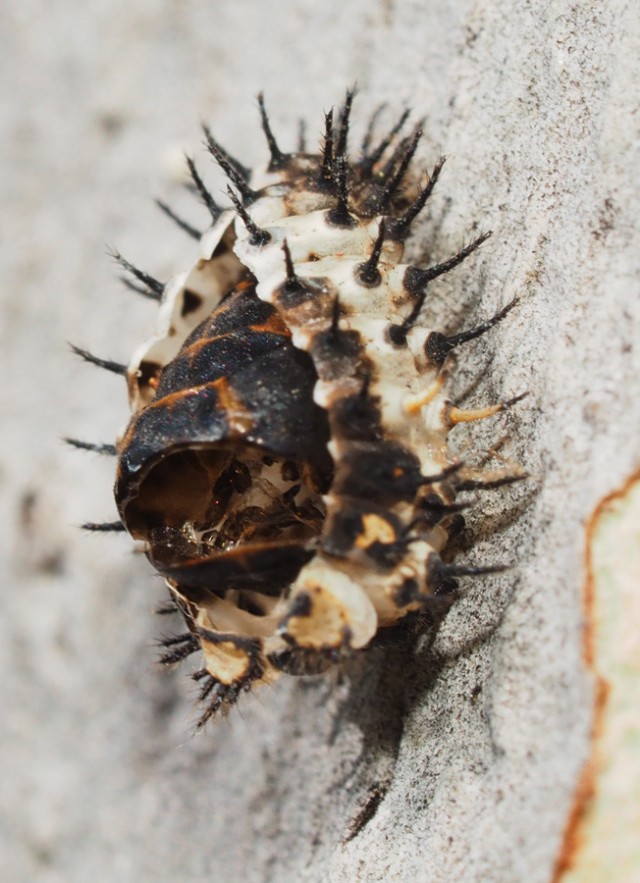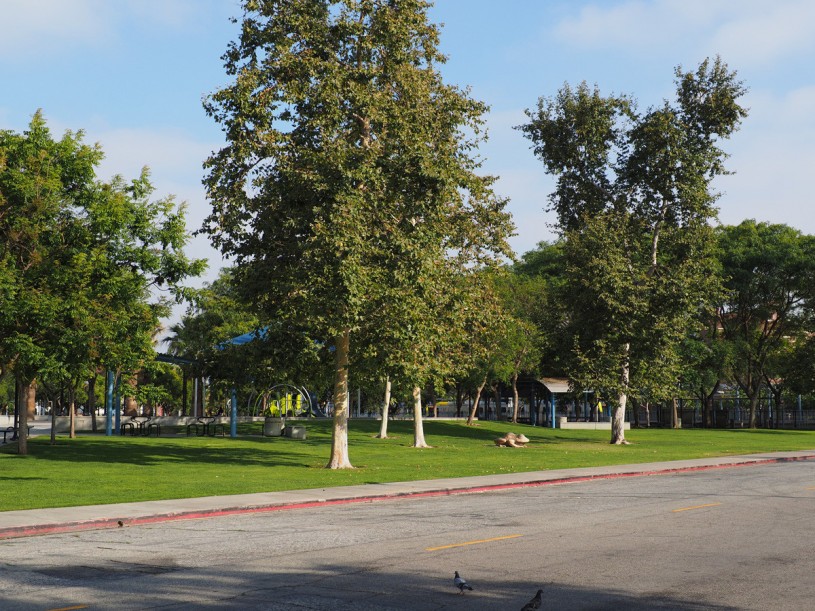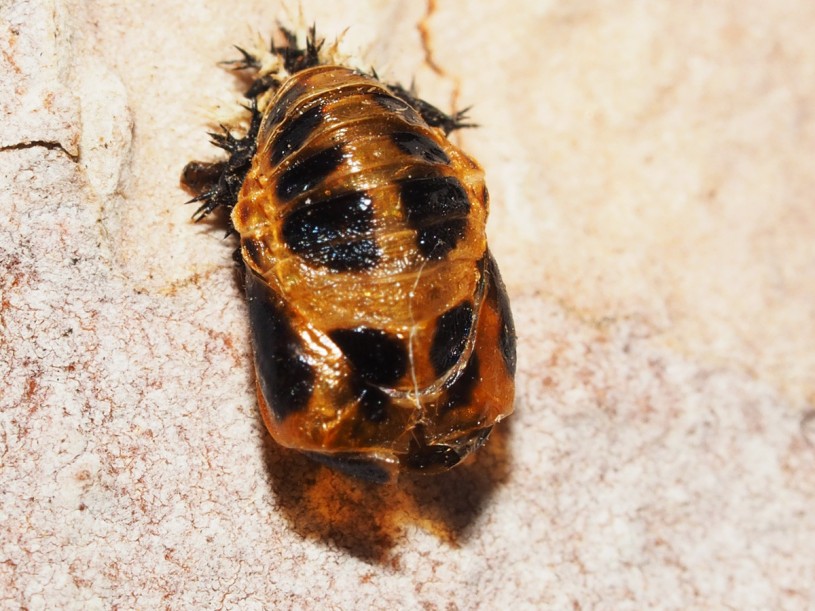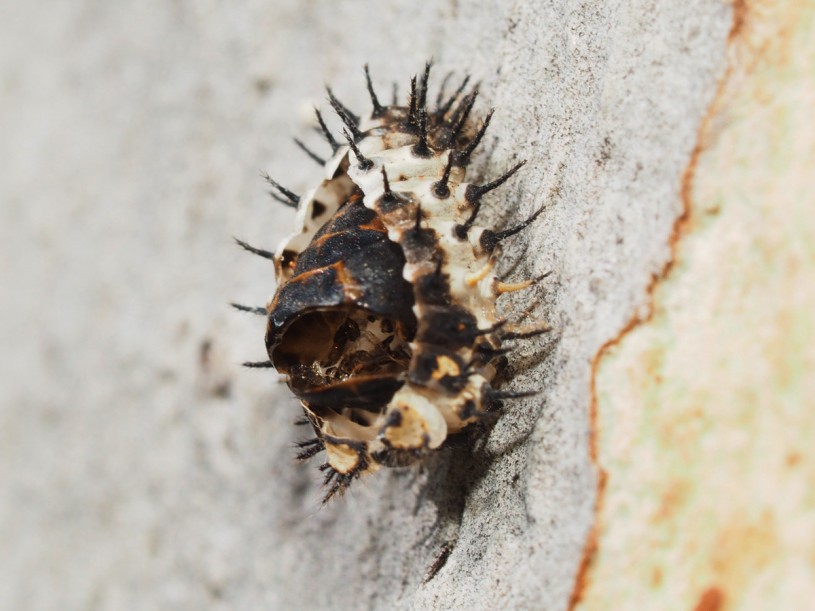The museum will be closed Thursday, January 1 for New Year's Day. We will reopen Friday, January 2.
Finding Nature in an Urban Playground
Critters among the concrete


Across a small lane from the Museum lies Jesse Brewer Park, a modest, if thirsty, area of lawn, trees and playground equipment. Usually, there are homeless people encamped there, waking up in the morning as I arrive at work. I sometimes look at the park and think that it is an uninspired space compared to the Museum’s Nature Gardens, but it is surely better than concrete, providing much-needed play space for kids. But what, I ask myself, does it provide for wildlife? Surely there must be some habitat, since the park has large, mature trees. Recently I walked across the road with camera in hand to see if I could find something interesting. It didn’t take long. The sycamore trees along the east side are dotted with pupae of ladybird beetles, or ladybugs. Like all beetles, ladybugs have “complete” metamorphosis, with an egg, larva, pupa, and adult stage. There are no “baby” beetles that somehow grow into larger beetles; once an adult emerges from its pupa, it is done growing.


I found a number of pupae decorating the trees, usually skirted with their spiky larval skins. Some of them looked a little different and might represent other species. Finally, I came across an adult, a still-pale-colored (from having just recently emerged) Harmonia axydris, the Halloween ladybug, so named by my friend John Acorn because of its orange color. It is an introduced species that has caused concern that it might be competitively excluding some native ladybugs, but in Jesse Brewer Park they are a welcome decoration on the sycamore trees.

Find nature in your local park? Share your photos with us, so they can become data points for science. Use #NatureinLA to share on social media, or e-mail your observations to nature@nhm.org, or upload them directly to iNaturalist using the free app.